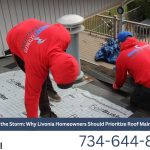Reroofing with a new roof over an older roof is becoming a common practice, especially if you have an asphalt shingled roof and you are adding another type of roof (like metal or tile) over it. This is also the time to make sure your new roof will perform at its optimal capacity and you will probably only has a chance to get it right. Therefore, being unilaterally using Roofing Foil during this process will give you all the advantages of a traditional underlayment, but it has an added advantage of being a radiation barrier.
If you have an existing shingle roof and you plan to add a metal roof to the shingles without doing a demolition of the old roof, then this is how you should do it.

Required materials:
Perforated, single-sided roofing foil radiation barrier
Wooden slats / Furring strips (1x or 2x) – not pressure treated
Roof cap nails (nails attached with plastic washer)
Roofing panels made of corrugated cardboard
Metal fastenings for metal roofs
Step 1: Step 1: Carry Radiant Barrier over the old shingles
Considering the cost of just a new roof, the radiation barrier is a non-brainer add-on. If you add radiant barrier film over an existing roof, you need to use the perforated film. The perforations allow the film to breathe and prevent moisture from getting trapped between the old roof and the film layer. The perforations are tiny holes that allow the moisture to pass, but they are still small enough to provide a secondary waterproof layer against liquid water.
The foil side always has an air space to work face to face; When the new roof is on a slat system, the slats provide the necessary air space (we recommend no less than a 1/2 “air gap) Unroll the one-sided roof foil with the foil side up, towards the sun To the foil edges on the old roof As the slats go on, you do not have to worry about fixing the foil too much, the slats really hold them tightly from the roof and work your way up to the top with the foil, overlapping seams a few inches on the way ( no need to tape the seams).
If the roof does not use slats, then you will want to make the slide a little better than if you can secure with them.
Once all the slides are in place, you’re ready for the next step.
Step 2: Step 2: Install the battens / furring strips (if used) over the foil
After covering the roof with the Roofing Foil, it is time to mount the spacers (fenders / battens) on the roof. How to install Battens can affect how well the roof drains and cools, so make sure you take into account when adding them. Additionally, the slats will create the air space required to reflect the film. A simple slat system in which the strips are horizontally offset or spaced apart will also work. The most important idea is that you have a system where air can flow easily and water can drop off easily.
The Roofing Foil is strong and will not rip or tear. So you can walk on it as you install the slats, without worrying about destroying the product. Get the slats and then you are ready for the last step!
Step 3: Step 3: Add Metal Roof Tiles
Now that you have covered the old shingles with the Roofing Foil and secured the slats at the top, you are ready to open the roof!
Secure the metal plates with the fasteners and finish the roof installation.
With the addition of a radiation barrier above the roof deck, the floor of the roof deck should be close to the ambient temperature (assuming you have decent loft ventilation). This means that you will eliminate almost all the radiant heat that would come from the deck with traditional black felt pads.
Watch the 1 min video below to see how Roofing Foil works to block the radiant heat of getting in your attic and ultimately at home:
The result is a high-performance roof system that reduces thermal heat by 97%! That means, no matter what type of metal or tile you choose (including paint) the radiation barrier blocks 97% of radiant heat from the sun through the roof and into your home. Your home will have instant energy savings, and be more comfortable year round.











